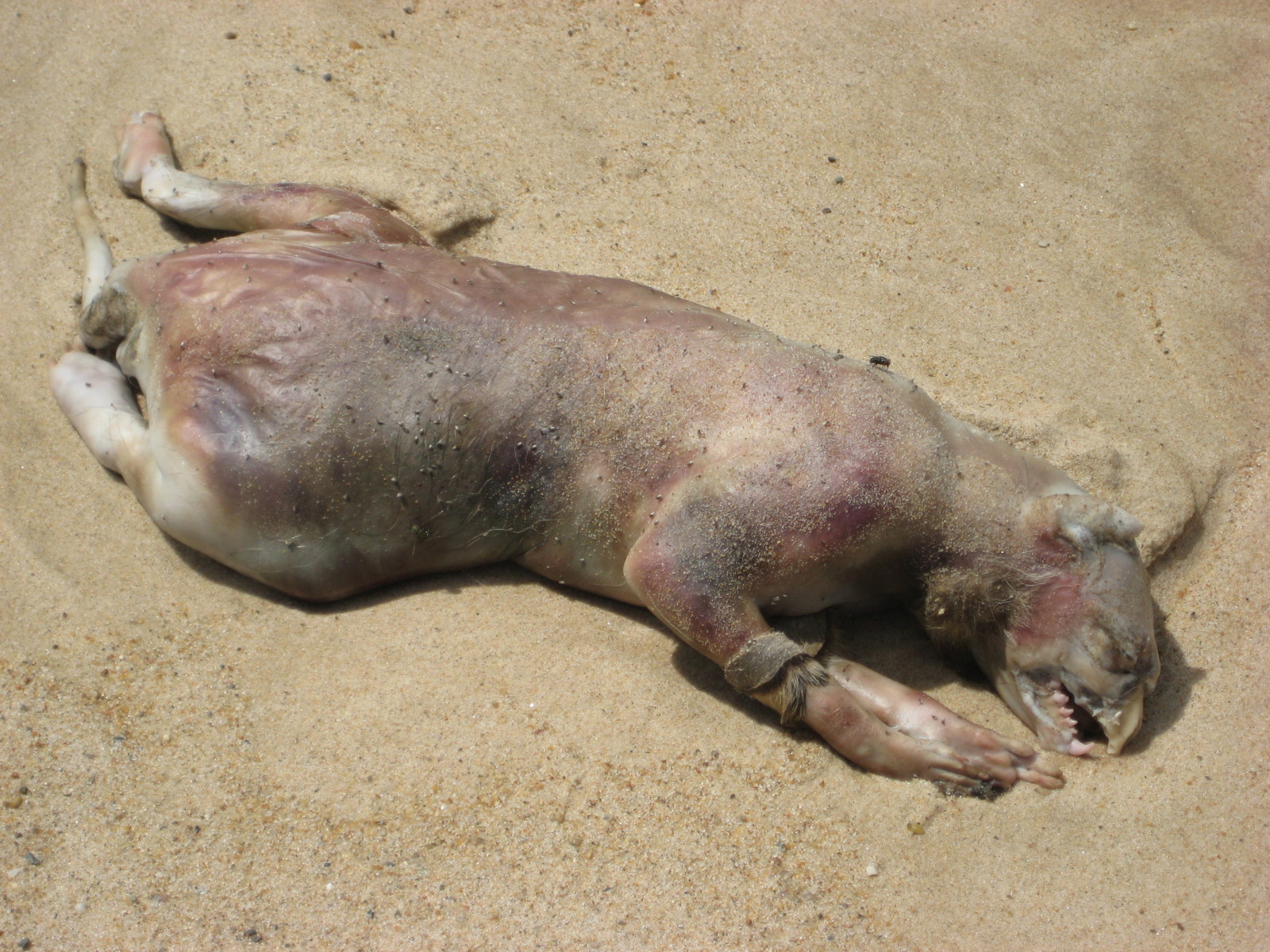Recently, a video clip has been circulating the web that purportedly shows a rabbit born earless due to the radiation at Fukushima. BoingBoing has a convincing take-down of the claims of the video: earless rabbits are a fairly common mutation, mother rabbits sometimes chew off their ears of their young due to stress, and no one even knows where the video was filmed.
More interesting than the video is the fact that we want to it to be real. Radioactivity should have immediate, visible consequences. Bodily harm should be made manifest, and any disturbances in the natural order need to be seen to be believed. After the nuclear bomb explodes, we all head to the ocean to watch Godzilla pop out of the waves.
The earless rabbit is an example of the pathetic fallacy, a form of personification that attributes human sentiment, morality, or motives to random natural occurrences. Nature, is this case, holds a mirror up to human actions. The rain cries with you, the sun shines when you smile. While the bunny is cute, other monsters of technology are usually bloodthirsty, unpredictable and nearly indestructible. In popular culture, technological evil is the root cause of organic, living evil. The bunny is only one member of a long list of creatures that pop culture has attributed not just to nuclear contamination, but to scientific hubris and general moral decline. With the exception of space aliens and life forms on exoplanets, it's hard to think of any recent boogey-animal or monster that's not at least partly anthropocentric in origin.

Ancient mythologies are full of monstrous animals that are purely 'old' nature, evolved from primordial ooze or created by the gods. Dragons, griffons, and sea serpents more or less occupied the same cultural space as lions, wolves, and (only recently) dinosaurs. They're all big, frightening things that want to eat us, and while they might be sent as divine punishment, their existence is not the direct result of human actions.
The dearth of 'natural' modern monsters may reflect the fact that it's become difficult to conceive of a wilderness that's not already subject to human control. Human technologies are responsible for global warming, toxic rivers, plastic oceans, radiation and deforestation. It's only logical that scientific progress be blamed for our cultural monsters as well. Human nature, not wild nature, has become the most powerful source of living nightmares.
Popular narratives reflect fears of human folly by creating pseudo-scientific origin stories for monsters, whether purely fictional or partially based in fact. Frankenstein's monster arose from electricity and galvanism, Godzilla, Mothra and their other kaiju brethren from nuclear radioactivity. 'Dren' in the movie Splice is a moral punishment for scientific hubris and uncontrolled sexuality. Even the Balrog in Lord of the Rings is awoken by industrially-minded dwarves recklessly mining too deep in the earth. On the real-life end of the spectrum, the infamous Montauk Monster, actually decomposed raccoon, was originally assumed to be an escaped mutant from Plum Island Animal Disease Center.

We have to invent fake nature when the real version doesn't measure up to our fears. Mutations induced by radiation and pollution are clearly real, but they are never as spectacular as hysteria and movies lead us to believe. The only reliable information about animal mutations in Chernobyl indicates subtle effects such as decreased brain volume and crooked feathers in birds. Transgenic organisms have yet to rise up from the lab and overthrow human society, and stripping natural resources has yet to summon vengeful organisms from the bowels of the earth.
When it comes to nature, we don't always get what we deserve. Instead of monsters, we get their absence: the disappearance of megafauna from tigers to elephant birds. Technology doesn't create monsters so much as it makes them go extinct.


Comments (0)
Share your thoughts and join the technology debate!
No comments yet
Be the first to share your thoughts!